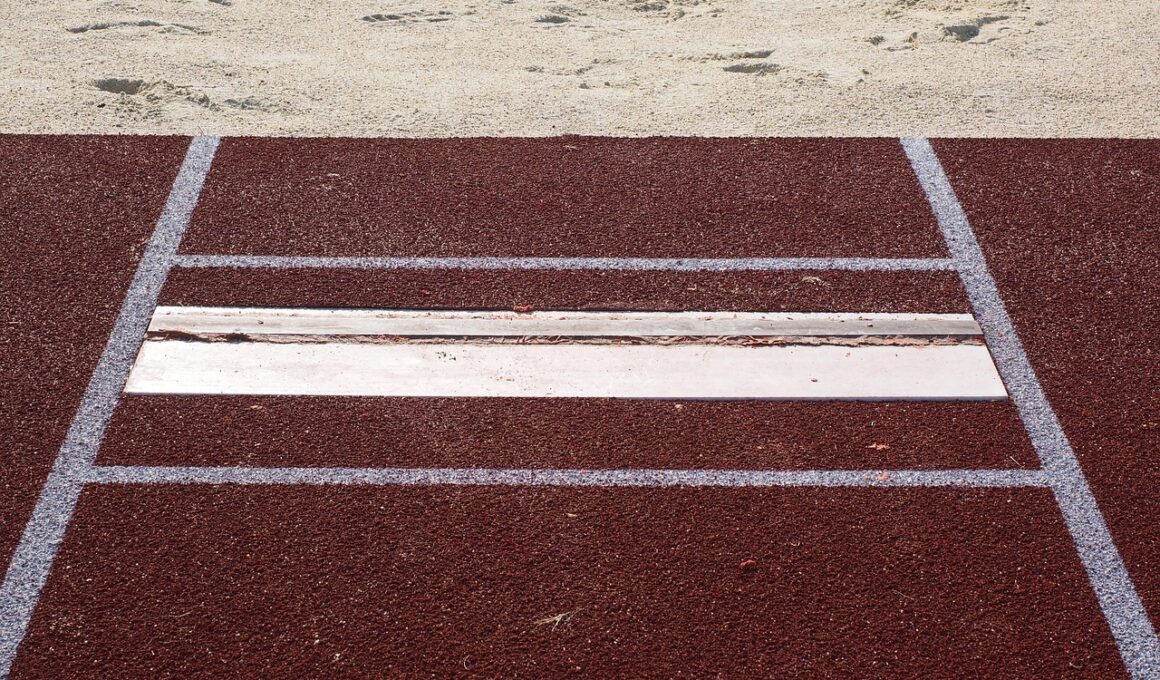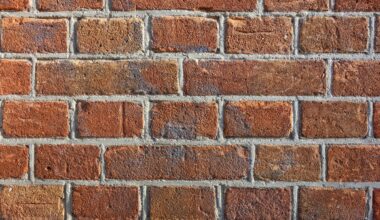Strength Training vs. Technique Training for Youth Long Jumpers
In the realm of youth athletics, long jump training combines various elements that contribute to an athlete’s success. Coaches often debate whether strength training or technique training holds the most importance for young jumpers. Strength training focuses on enhancing physical capabilities, while technique training emphasizes the proper execution of the jump. Both approaches play crucial roles in developing a successful long jumper. Finding the right balance between these two aspects can significantly impact performance. When athletes focus solely on strength, they may overlook the finer points of jumping mechanics. Conversely, emphasizing technique without sufficient strength may hinder an athlete’s explosive potential during takeoff. Therefore, a comprehensive training program should integrate both elements. This allows young athletes to develop the necessary power and skills to excel in long jump meets. Coaches should consider individual athlete needs when designing training regimens, mindful of their unique strengths and weaknesses. Regular assessments can also help tailor training programs accordingly, ensuring continuous improvement. Ultimately, both strength and technique contribute to a well-rounded long jumper who can compete effectively at various levels.
The importance of strength training lies in its ability to enhance the athleticism of young long jumpers. Strength training leads to improved muscle power and explosiveness, which are essential for maximizing jump height and distance. Building foundational strength provides young athletes with the physical capacity to execute jumps effectively. This involves engaging multiple muscle groups, using various exercises to target both lower and upper body strength. Exercises such as squats, lunges, and deadlifts contribute significantly to strength development. Athletes should also incorporate plyometric training to develop explosive power, suitable for takeoff. However, it’s essential to approach strength training carefully to avoid injuries. Youth athletes often lack the physical maturity and flexibility of older competitors, making careful attention to technique crucial. Coaches must ensure that young athletes use proper form and technique throughout their strength training sessions. Injury prevention remains a priority, as well. Therefore, incorporating flexibility and mobility work into strength training sessions proves vital. Ultimately, a solid strength foundation will support long jump performance as athletes continue to grow and develop within the sport. These athletes will be better prepared to meet the challenges of competition and achieve personal bests.
Technique Training: The Key to Mastering the Long Jump
Technique training plays an equally vital role in shaping successful long jumpers and should not be underestimated. The mechanics of jumping, including approach speed, takeoff angle, flight, and landing, significantly impact performance. Mastering each component requires dedicated instruction and practice. Athletes need to focus their efforts on developing correct techniques that maximize efficiency and minimize wasted energy. Proper run-up techniques allow jumpers to build speed before takeoff, which is crucial for achieving greater distances. Coaches often prioritize drills that enhance specific elements of jumping, assisting athletes in perfecting their approach and takeoff. These drills can include various run-up exercises, takeoff techniques, and visualizations to optimize jumping performance. Athletes also benefit from video analysis, which offers valuable feedback on their technique. This allows for targeted corrections to enhance performance. The combination of technique drills and attentive coaching leads to significant improvements over time. Moreover, young jumpers can gain confidence in their abilities as they witness tangible results. Therefore, integrating both strength and technique training is essential for aspiring long jumpers to maximize their potential on the runway, ultimately leading to better overall performance during competitions.
Once technique training is established, it is crucial to integrate strength training into the regimen. As athletes become more confident in their jumping technique, supplemental strength work can optimize their performance. During the developmental phases of youth athletics, the body undergoes rapid changes, necessitating tailored strength work. Specific drills can aid in transitioning from purely technical practice to incorporating strength-based exercises effectively. Coaches can implement functional strength training that simulates jumping movements and engages multiple muscle groups. This helps young athletes develop not only strength but also specific muscle coordination required for jumping. Circuit training can be particularly effective, combining bodyweight exercises with resistance training in environments that are both engaging and educational. As athletes progress, they can increase the intensity and complexity of strength exercises to continue their development. Proper progression of load and volume is essential to prevent injury and promote sustainable growth. Incorporating both strength and technique into a cohesive training approach will prepare youth long jumpers for competitive success. Coaches play an essential role in guiding these athletes, enabling them to understand their bodies and how best to utilize their capabilities in the long jump competition.
Injury Prevention for Youth Long Jumpers
The risk of injury in youth long jumpers can significantly impact performance and overall development. Therefore, it remains critical for coaches and athletes to prioritize injury prevention when planning their training approaches. Teaching proper techniques is a vital first step in helping athletes minimize injury risks. Emphasizing correct landing mechanics as well as safe takeoff techniques will mitigate potential injuries. Additionally, implementing a robust warm-up and cool-down routine can greatly reduce muscle strains and other common injuries faced by young athletes. Stretching and mobility work should be integral parts of any training session. They prepare muscles for the physical stresses of training and competition. Coaches should educate their athletes about the importance of listening to their bodies. If a young athlete experiences pain or discomfort, they must be encouraged to communicate these issues promptly. Periodic recovery periods or deload weeks can also help mitigate the risk of overuse injuries. Furthermore, including cross-training activities can maintain overall fitness while promoting recovery. As an athlete’s strength and technique improve, so does their ability to perform safely. Injury prevention strategies ensure that youth long jumpers remain healthy, enabling them to realize their athletic potential.
The role of a coach in balancing strength and technique training is fundamentally important in developing youth long jumpers. Coaches bring their expertise and experience to help shape training programs suited to the needs of their athletes. This involves assessing athletes’ progress, individual goals, and addressing any weaknesses they may have. A comprehensive training plan will include a mix of strength and technique drills, tailored specifically for each athlete. By prioritizing athlete development, coaches can design training cycles that emphasize specific objectives, be it refining technique or building strength for competition. Coaches should also incorporate feedback into their coaching methods, actively engaging with young athletes to foster a deeper understanding of their training. Communication becomes vital in conveying the importance of both strength and technique throughout the long jump training process. Moreover, introducing competitive experiences allows youth long jumpers to practice their skills in real-world settings, enhancing their confidence. Coaches play a guiding role in helping athletes to set realistic goals and achieve personal bests. Fostering a supportive environment for athletes not only enhances their performance but also sustains their enthusiasm for the sport, ultimately contributing to long-term success.
Conclusion: The Best Approach for Youth Long Jumpers
In conclusion, the optimal training approach for youth long jumpers is one that integrates both strength and technique training effectively. Both areas serve distinct purposes, collectively contributing to an athlete’s overall performance. Strength training builds the physical foundation necessary for explosive jumps, while technique training focuses on mastering skills crucial for successful execution. A dual approach ensures that young athletes develop holistically, addressing various elements that impact their performance in competition. Coaches should remain adaptable, continually assessing athletes’ progress and adjusting training plans based on individual needs. Regularly incorporating feedback will optimize the effectiveness of training sessions. Moreover, educating young jumpers about their training’s physical aspects fosters healthy relationships with their bodies. By promoting positive attitudes toward strength and skills development, young athletes are more likely to remain engaged with their training programs and perform consistently. Ultimately, a well-structured training regimen will set youth long jumpers on the path toward success, helping them achieve their athletic ambitions. Coaches, athletes, and parents must work together to create a supportive environment conducive to growth. With the right guidance, youth long jumpers can certainly make significant strides both in training and competitions.
In summary, it is evident that finding the ideal balance between strength and technique training is crucial for long jump success. Coaches must take an active role in monitoring individual progress while ensuring young jumpers are gaining valuable skills. By combining focused strength workouts with nuanced technique drills, youth long jumpers will not only improve performance but also lower injury risks during training sessions. Furthermore, creating an environment that fosters proper communication will lead to a more cohesive training unit. This encourages a sense of accountability and motivation among young athletes, ensuring they strive towards their goals. A well-rounded approach to training is essential for youth long jumpers, as it builds confidence and competence. As jumpers improve, they will likely experience an increase in their competitive spirits, leading to higher performance levels. In order to realize real potential, athletes and coaches alike must prioritize both strength and technique together as complementary parts of a wider athletic development plan. Through dedication, perseverance, and guided instruction, young long jumpers can pave the way for future achievements on the runway. By adhering to a balanced training approach, youth athletes will continue to grow and thrive in their athletic endeavors.


